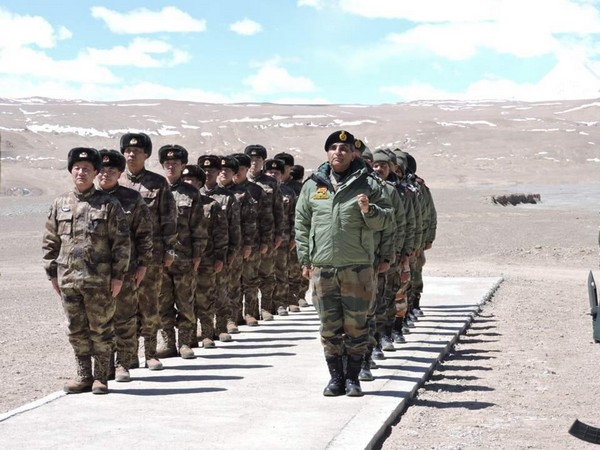As India and China look to commence Battalion Commander level talks regarding the border faceoff in Eastern Ladakh, both sides have asked their troops to retreat from several crucial flashpoints.
HIGHLIGHTS
ü The Indian and Chinese military will hold more talks this week
ü However, the standoff between both armies continues near Pangong Lake
ü Indian military teams already in Chushul to engage Chinese in talks
Hoping to discover answers for the progressing outskirt contest in Eastern Ladakh, India and China have begun withdrawing troops at different areas in the region.
The improvement is occurring when the two sides are going to hold the following degree of military talks planned to begin this week, sources told Aajtak and India Today.
The discussions between the Indian and Chinese armed forces will be held in the not so distant future at the Patroling point 14 (Galwan territory), Patrolling point 15 and Hot Springs zone.
The Chinese Army has purportedly pulled back its soldiers from the Galwan Valley, PP-15 and Hot Springs in Eastern Ladakh region by 2 to 2.5 kilometres, sources said.
The Indian side has additionally brought back a portion of its soldiers and vehicles from those territories. Sources said talks are being held at the Battalion administrator level on these areas and the two nations have had hotline converses with their partners.
Be that as it may, the deadlock between fighters of the Indian Army and the Chinese Peoples Liberation Army proceeds close Pangong Lake, which was the site of a significant physical fight a month ago. Troopers from the two armed forces conflicted with sticks and stones and got into fistfights.
It was after this fight reports began coming in of the two armed forces getting into stalemates at different focuses along the LAC.
Beginning talks are being held in these zones as Chinese military exercises had likewise begun in Eastern Ladakh from this area just, sources included.
Indian military groups are as of now in Chushul to draw in the Chinese in talks and are organizing with the senior authorities in such manner.
Indian and Chinese soldiers were occupied with a month-long showdown since May 5 after a brutal conflict in Pangong Tso which is ending up being greatest military stalemate after the 2017 Doklam scene.
In their first genuine endeavours to end the column, Lt General Harinder Singh, the general official directing of Leh-based 14 Corps, and Commander of the Tibet Military District Maj Gen Liu Lin held a broad gathering on Saturday. Be that as it may, it couldn’t deliver any unmistakable outcomes.
In an announcement, the service of the outside undertaking on Sunday said the gathering occurred in a “warm and positive climate” and that the two sides concurred that an “early goals” of the issue would add to the further improvement of the connection between the two nations.
In its remarks, the Chinese Foreign Ministry said both the nations have consented to work to keep up harmony along the Line of Actual Control and resolve the deadlock through talks.
Saturday’s discussions additionally came a day after the two nations held political talks during which the two sides consented to deal with their “disparities” through tranquil conversations while regarding each other’s sensitivities and concerns.
After the deadlock started in nearly a month ago, Indian military initiative concluded that Indian soldiers will embrace a firm methodology in managing the forceful acting by the Chinese soldiers in totally contested zones of Pangong Tso, Galwan Valley, Demchok and Daulat Beg Oldie.
The Chinese Army has been slowly increasing its key saves in its back bases close to the LAC by hurrying in big guns weapons, infantry battle vehicles and substantial military hardware, the sources said.
The trigger for the go head to head was China’s solid restriction to India laying a key street in the Finger zone around the Pangong Tso Lake other than development of another street interfacing the Darbuk-Shayok-Daulat Beg Oldie street in Galwan Valley.
The street in the Finger zone in Pangong Tso is viewed as critical for India to complete a watch. India has just chosen not to slow down any outskirt framework extends in eastern Ladakh taking into account Chinese fights.
The circumstance in eastern Ladakh decayed after around 250 Chinese and Indian fighters were occupied with a rough go head to head on May 5 and 6. The episode in Pangong Tso was trailed by a comparable occurrence in North Sikkim on May 9.
The India-China outskirt contest covers the 3,488-km-long LAC. China claims Arunachal Pradesh as a feature of southern Tibet while India challenges it.
The two sides have been declaring that pending the last goals of the limit issue, it is important to keep up harmony and serenity in the outskirt territories.


